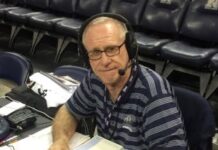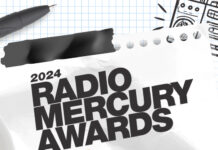
You’ve heard plenty of them: radio ads that suck. Forget about making you remember the client, they make you remember the other preset buttons exist. They’re all over radio and hurt the perception of the great reach medium an advertiser could hope for. Every day this week in Radio Ink‘s headlines, we’re talking with a different expert – from local production to agency veterans – on how to stop the “suck.”
In Part 5 we talk with “Radio’s Storyteller,” Jeffrey Hedquist. He’s a marketing consultant & commercial creator who’s won more than 700 advertising awards for clients in 45 states, and an outspoken voice in the fight against ads that suck.
Radio Ink: Let’s get right to it – what percentage of ads on radio don’t suck?
Jeffrey Hedquist: I would say probably 10 to 20%, 20% at most. And it’s unfortunate, you know, that means that 80% of them do. Then potential advertisers listen to it and say radio doesn’t work. Radio works great, but you need to invest time and sometimes money in making it happen.
Too many commercials are being written by production directors who’ve never had any training and or salespeople in the car on their way back from making a sale. But the potential is still great. It kind of doesn’t matter that some of the stations I work with are the lowest-rated in the market, their revenue is solid because the commercials are compelling.
Radio Ink: So then what are three primary ways to craft a compelling commercial?
Jeffrey Hedquist: First, engage the listener in the first few seconds. That’s your audio headline. Your audio headline’s job is simply to say, “Hey, listen to this,” and intrigue, entertain, shock, scare, horrify, invite, whatever it is something to break through the clutter. It shouldn’t sound like a commercial, it should sound like something else. When you do that, you make a promise to the listener that the next few seconds are going to be worth listening to. Then it gets tough. Now you have to deliver on that promise.
You have to tell them a story. You have the option of telling a story about the advertiser, about their staff, about their product, about their service, or about the listener. That’s the second thing.
The third thing is don’t talk at them, talk to them. Even if you don’t have all the voices, sound effects, music, or resources that big production groups have, you can still make a great spot if you pretend that you’re on the phone with a friend and tell them a story in conversational language. But people don’t do that. They get in announcer mode. Oftentimes I will have whoever’s on the microphone take off their headphones and put a phone up to their ear and pretend they’re talking to somebody on the phone. It changes the whole approach. They’re saying, “Let me tell you this. This is kind of crazy. I don’t usually talk about shoes, but I found a pair of shoes that are so comfortable.” You get out of commercialese.
Radio Ink: Speaking of commercialese, you’re a collector of cliches. How do you deal with a client that insists on putting one of those worn-out phrases in a spot?
Jeffrey Hedquist: I’ve been collecting cliches for years. I have a list of 407 cliches which you can see on my website.
When you use them, it rolls right over your audience. At best, their attention goes to something else while the commercial is on. At worst, they switch stations. Well, I guess at the very worst they make an active promise not to go to that advertiser because their ad was so obnoxious.
Now, sometimes you don’t have a choice. The client says, “I’m not going to go on the air unless you use my phrase, which I’ve been using for 20 years, which is, ‘qualified service people.’” So then instead of just saying, “At Bob’s Automotive, they have qualified service technicians,” you stop and find a way to explain that that would be different.
Maybe you start the commercial by saying, “Bob and Ralph spent the last two weeks at brake school. They learned about calipers and disc brakes. Sounds fun. Would you ever go to brake school? Absolutely not. So go to Bob’s Automotive, they do this training every single year. Instead of saying the cliched “qualified trained technicians.” You give them a story about the trained technicians. That’s how you beat cliches.
Radio Ink: In that same area, to phone number or not to phone number?
Jeffrey Hedquist: It depends. If the phone number is the only way that you can reach that advertiser, then you don’t have a choice. Ideally, it would be very easy to remember. 1-800-BOB-AUTO. You have to make it memorable other than beating somebody over the head with it 20 times. In most cases, everybody’s website has the phone number on it – probably on every page. Send people to the website instead. This brings us to an important point: one call to action.
Every time you say, “Don’t forget to visit us on the web at BobsAutomotive.com or call us at 606-123-4567 and ask for Elizabeth,” just know you’ve just cut your responses in half at a minimum.
When you give people two decisions to make and they can’t decide which one to pick, they won’t make any. Give them one; make it clear. If you can’t decide, make multiple commercials. Have one ending with a single call to action to go to the website and another with the phone number, test them, and see what your results are. Just make sure you’ve given them a reason to call or visit.
Radio Ink: When a production director or an account executive is getting information for a spot from a client, what’s a question that too many overlook?
Jeffrey Hedquist: Sometimes they just don’t do the research. Find the emotional problem you’re trying to solve. Every advertiser solves problems with their products or services. Oftentimes those problems aren’t clear to their audience. You have to remind them that they have them, how bad it is, and then give them relief.
For example, let’s say you have an advertiser that paves concrete. What’s emotional about that? Start to drill down. What do you pave? Maybe patios or something like that. What does the audience do there? They have parties and they bring friends. So you’re talking about concrete paving, but the emotional thread is about bringing friends and family over, making people feel comfortable at your home, and maybe being impressed by your home. Concrete pavers suddenly become a team to bring family and friends closer together so you can have more fun, relax, and feel good about yourself.
One of the fun things I do is show people no matter what advertiser you have, you keep peeling the onion. Keep drilling down until you find the emotion behind that. And that’s where the power of radio is. If you can touch people’s hearts, you can touch people’s guts, as Chuck Blore would say.
Radio Ink: Speaking of emotions, let’s talk about the emotion of fear – specifically management or a client’s fear of investing a lot of money in a spot’s production. I mean, you’re talking about how sometimes that’s what it takes. How do you convince them to make that investment and when is it really necessary?
Jeffrey Hedquist: It’s tricky. We always try to guess what the potential of an advertiser is. When I was in radio sales, I would take some tiny advertisers that I thought had potential, create something amazing for them, and see them get great results, but in some cases I was wrong. They were on for two weeks and gone and out of business.
But in a lot of cases, I helped grow those tiny businesses to something big. My sales manager at the time would ask, “How did you know that would happen?” Well, it was because of the disasters. You get better at guessing which advertisers have potential. And if an advertiser has potential, but you’re not sure, you can always put in a time investment before a monetary one.
But if you do invest the time and money to make better commercials, your station will sound better and that will increase TSL. If your station can invest money in each ad, try it out for two or three months. See how it works. In most cases, it gets results worth the investment.
Radio Ink: You’re not just “Advertising’s Storyteller,” you’re one of advertising’s biggest cheerleaders. What keeps you excited about the state of radio advertising?
Jeffrey Hedquist: What got me interested in radio keeps me interested. When I started, I was excited about the miracles that my mentors were creating with just the medium of sound. I love that there are no visuals in our medium. With voice, sound effects, music, and silence you can touch every sense and use that to change people’s minds. You can make them feel any emotion. You can change the way they buy, and what they believe if you reach them emotionally. That, for me, is one of the thrills that keep me fascinated by this amazing business that we’re in.
Radio Ink: Is there anything you’d change?
Jeffrey Hedquist: There are stations that you have detailed in your headlines that are working with shorter stop sets. Think about all the experimentation in the history of commercial radio. If you can find a station that’s willing to experiment more, you might find that it works or not, but it’s worth an experiment.
Commercials and imaging are about 17% of each hour. Some people have called me the “17% Consultant” because you can increase your time spent listening by improving the commercials and the imaging on a station. People will pay more attention to the messages, advertisers get better results, and you can make more money by running fewer spots. That’s as close to magic as I can imagine.
And a lot of the things that I touched on here, I’m gonna go into more detail in September in Cincinnati, both in the presentation that I do, and I will be there to answer any questions that anyone has of me when I’m not on stage, which would be great, and I can follow up later. I want to help people get as much as revenue they can and find ways to really help their advertisers become successful.
Read Part 1 of “Why Do So Many Radio Ads Suck?” with iconic adman Terry O’Reilly here. Read Part 2 with Seven Mountains Media’s TJ Hower here. Read Part 3 with Rahul Sabnis and Jill Belloma from The Studio at iHeartMedia here. Read Part 4 with SBS’ Jesus Salas here.
To get the most out of your copy, ads, and sales (and learn from Jeffrey in person), check out Radio Ink’s Radio Masters Sales Summit – September 13 and 14 in Cincinnati, Ohio.









There are mornings when you turn on the radio and hear an advertisement, like Progressive Radio Ads, that piques your curiosity and makes you want to learn more about their deals. Occasionally, it can be a podcast you find fascinating or a sponsorship you’re interested in learning more about.
So many great points, so little time. One thing to remember from a listener’s perspective. Your station’s imaging IS a commercial. Promos-to the listener-commercials. I once worked with an imaging director-probably the best and most attentive to his craft the world has ever known. Problem was he HAD to prove how good he was. Promos that could have been :30 were :60. Imaging that was :20 could have been :05. 11 units in a commercial set is way too much. Add the promo and imaging out – be prepared to conduct CPR on the listener. I pity the poor account executive who has to write his/her own copy. The poor production person who has to fix the sales person’s copy. Looking forward to more in this series!
A successful approach to imaging is the same as commercials – tell a (short) story about the listener. In just a few seconds you can engage them and remind them this is THEIR station.
I’ll have some tips to help those AEs and Production Directors at the Summit in September.